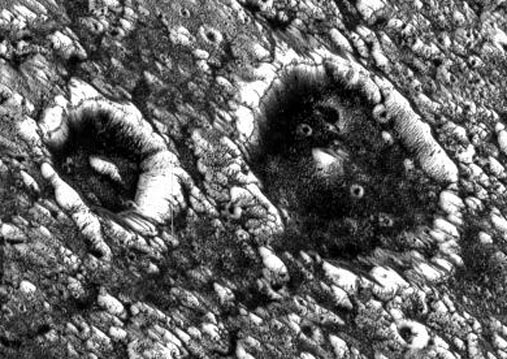
|
Explanation: Ganymede has craters within craters within craters. The old surface of the largest moon in the Solar System shows its age by the large amount of these impact features. The above picture released last week shows two old craters with dark floors located in a relatively bright region known as Memphis Facula, a region itself thought created by an ancient collision. The strange dark floors of these craters were themselves created long ago and now house craters of their own. Crater Chrysor, on the left, spans about 6000 meters, about half that of crater Aleyn on the right. The robot spacecraft Galileo took the above photograph during a flyby of this moon of Jupiter in June 1996.
|
January February March April May June July August September October November December |
| ||||||||||||||||||||||||||||||||||||||||||||||||
NASA Web Site Statements, Warnings, and Disclaimers
NASA Official: Jay Norris. Specific rights apply.
A service of: LHEA at NASA / GSFC
& Michigan Tech. U.
Based on Astronomy Picture
Of the Day
Publications with keywords: Jupiter - Ganymede - crater
Publications with words: Jupiter - Ganymede - crater
See also:
- APOD: 2025 May 25 Á Beneath Jupiter
- Painting with Jupiter
- APOD: 2025 April 2 Á Jupiter and Ring in Infrared from Webb
- APOD: 2025 March 9 Á Cyclones at Jupiters North Pole
- APOD: 2025 February 16 Á Perijove 11: Passing Jupiter
- APOD: 2025 January 12 Á Mimas: Small Moon with a Big Crater
- Stereo Jupiter near Opposition
